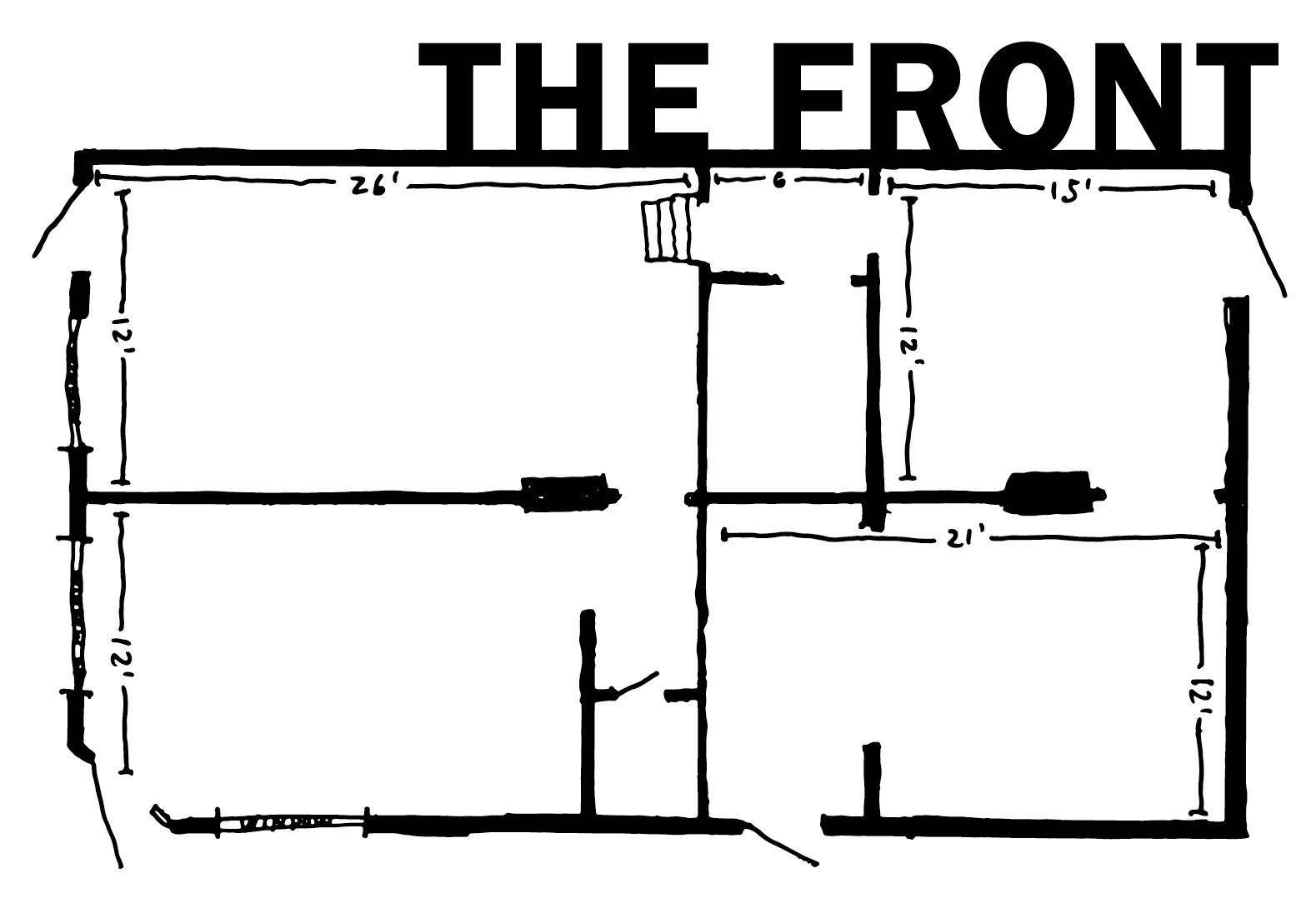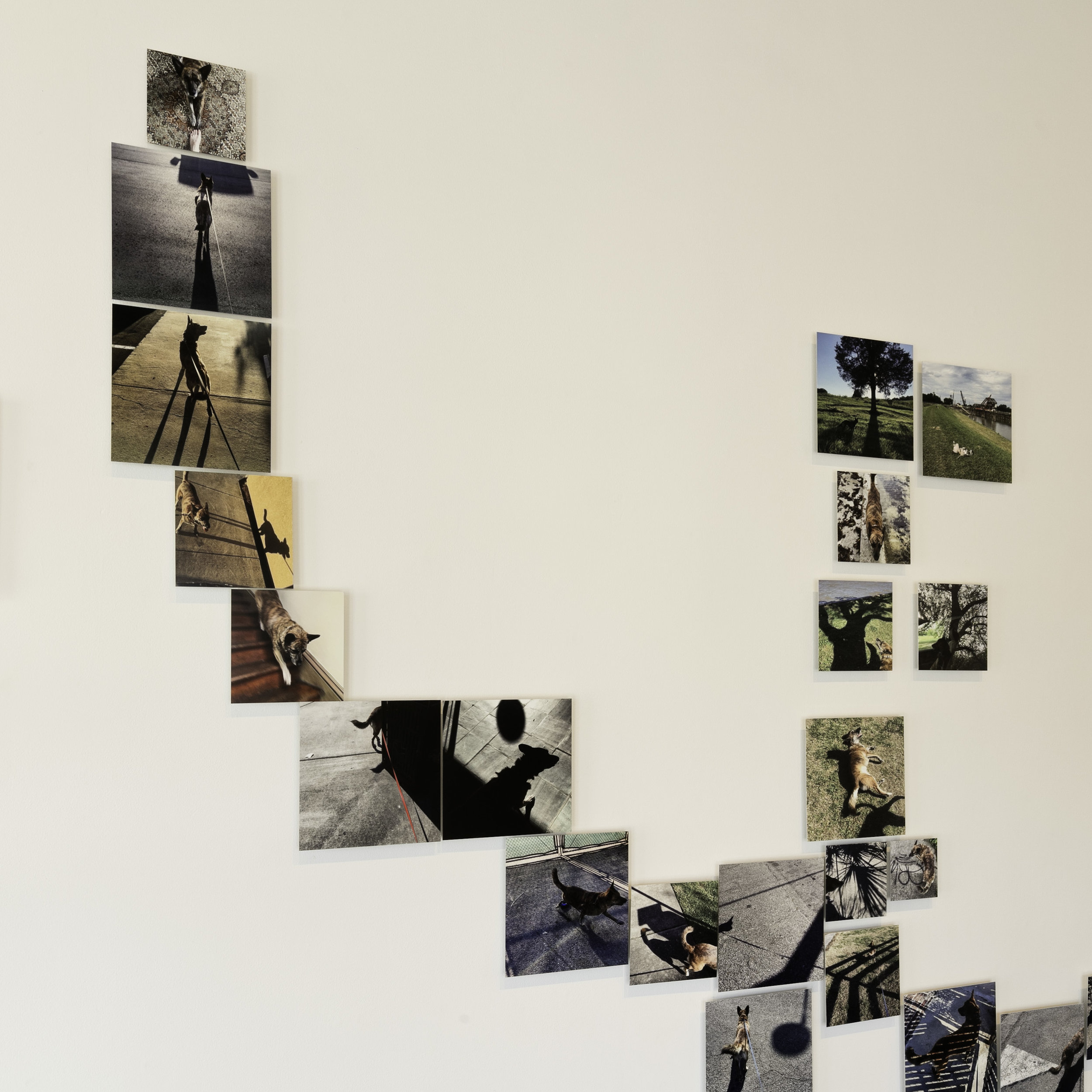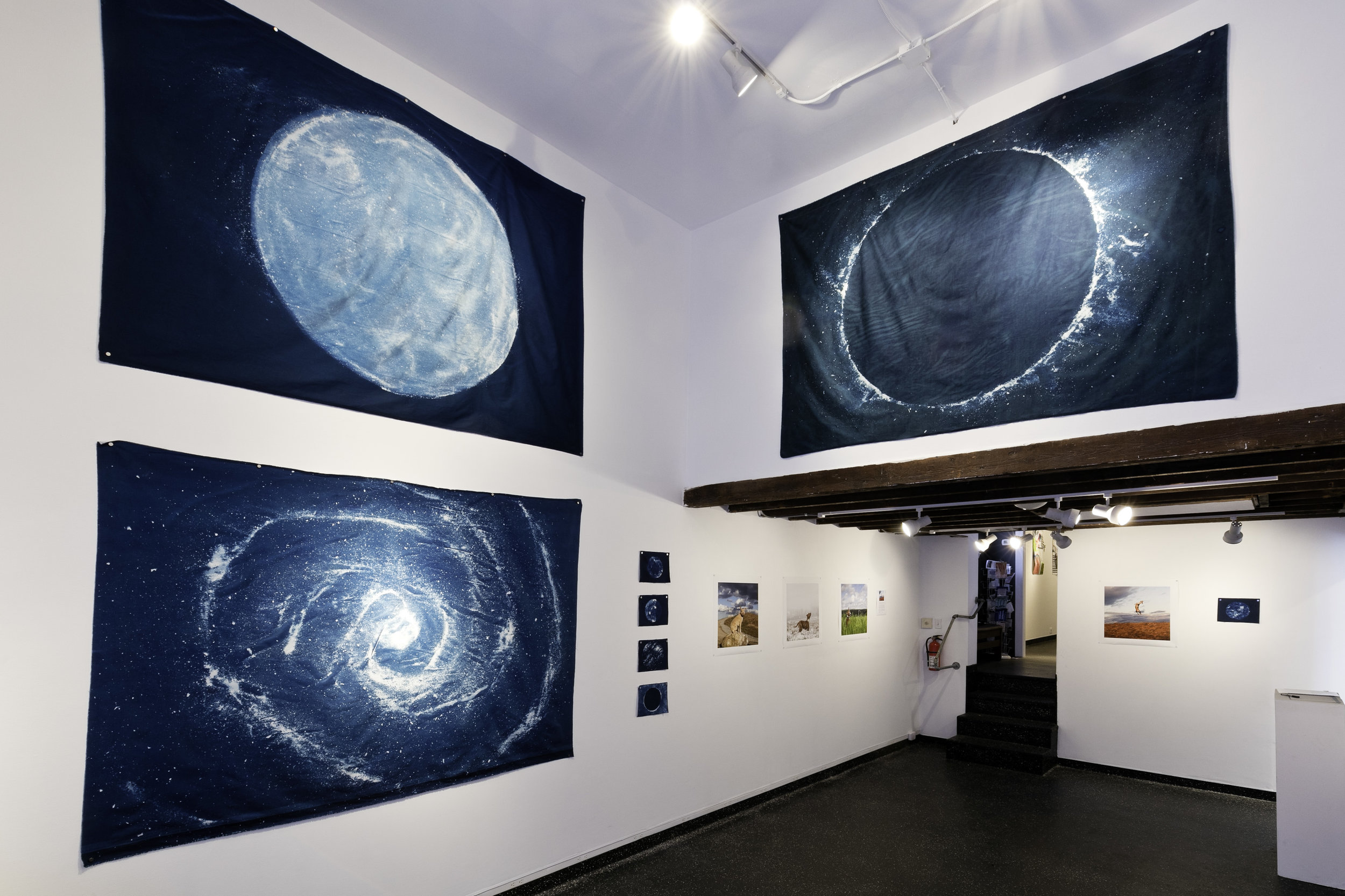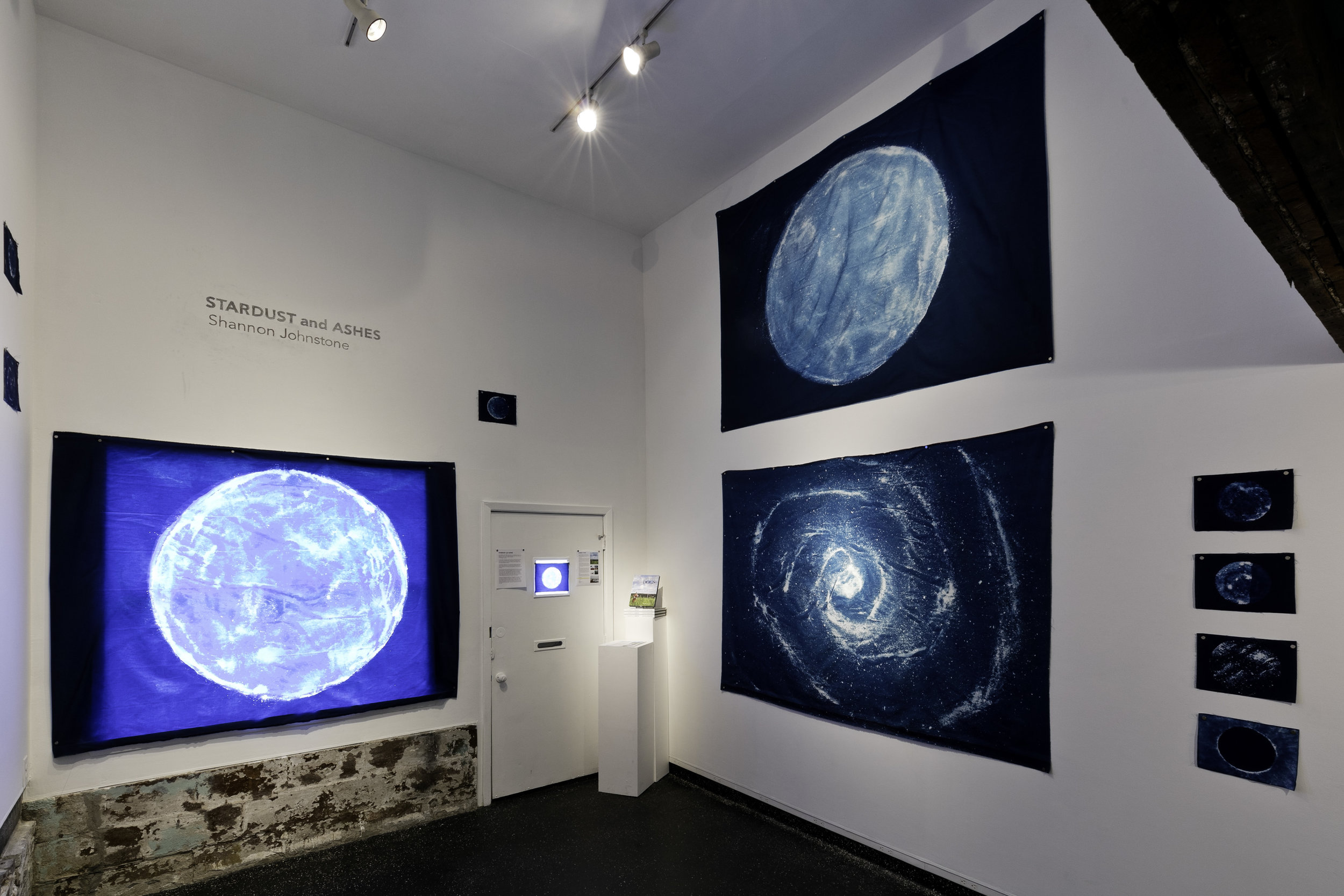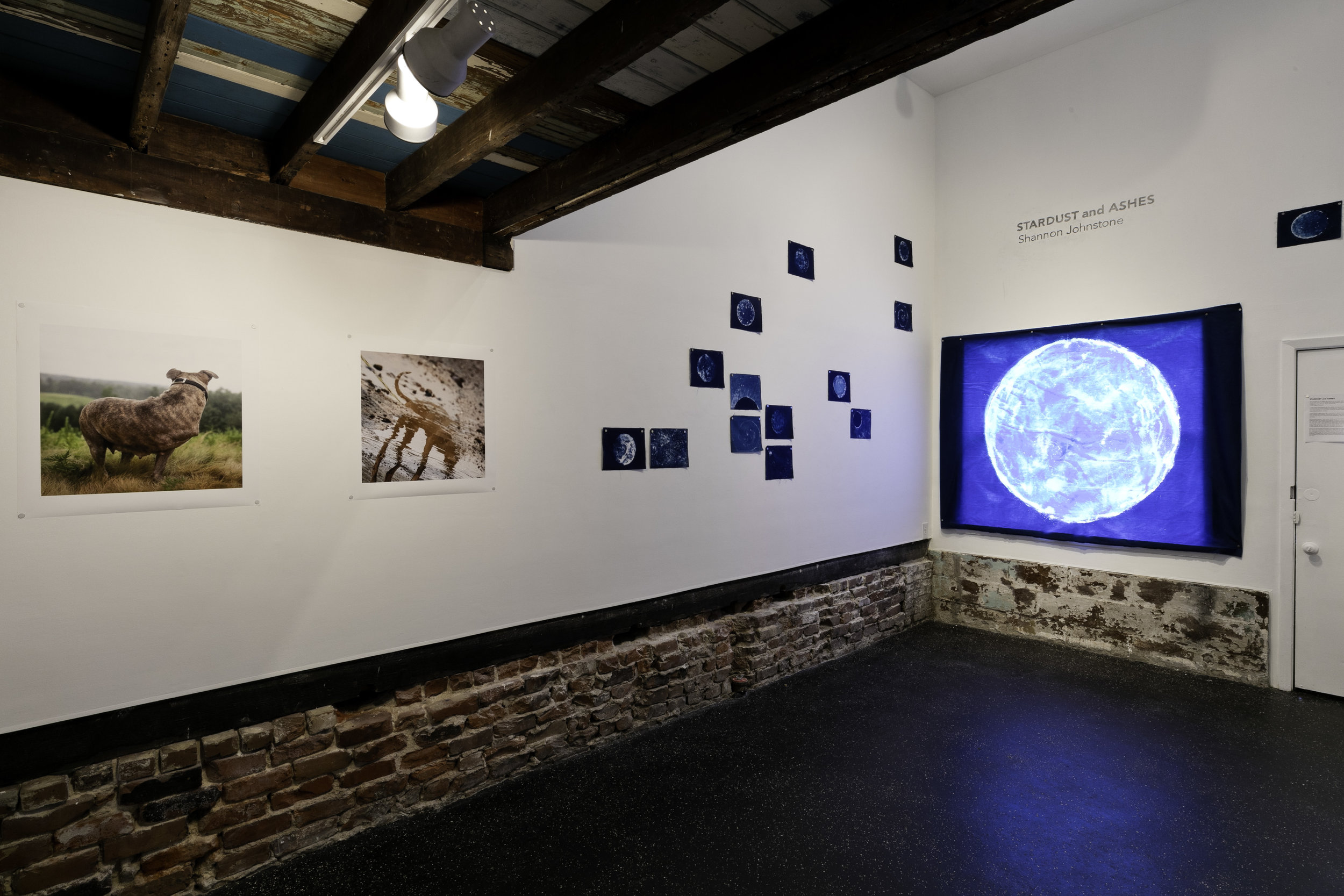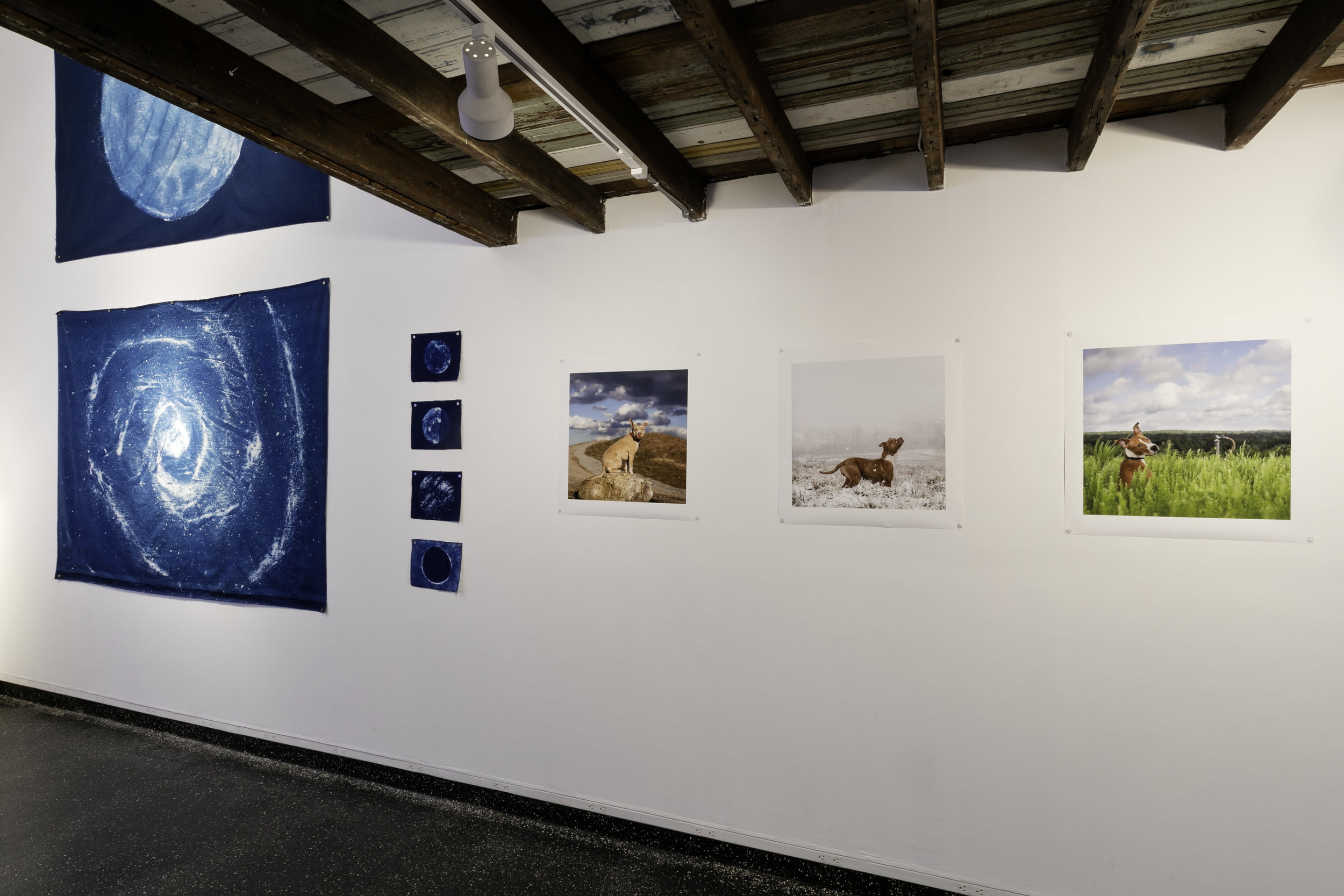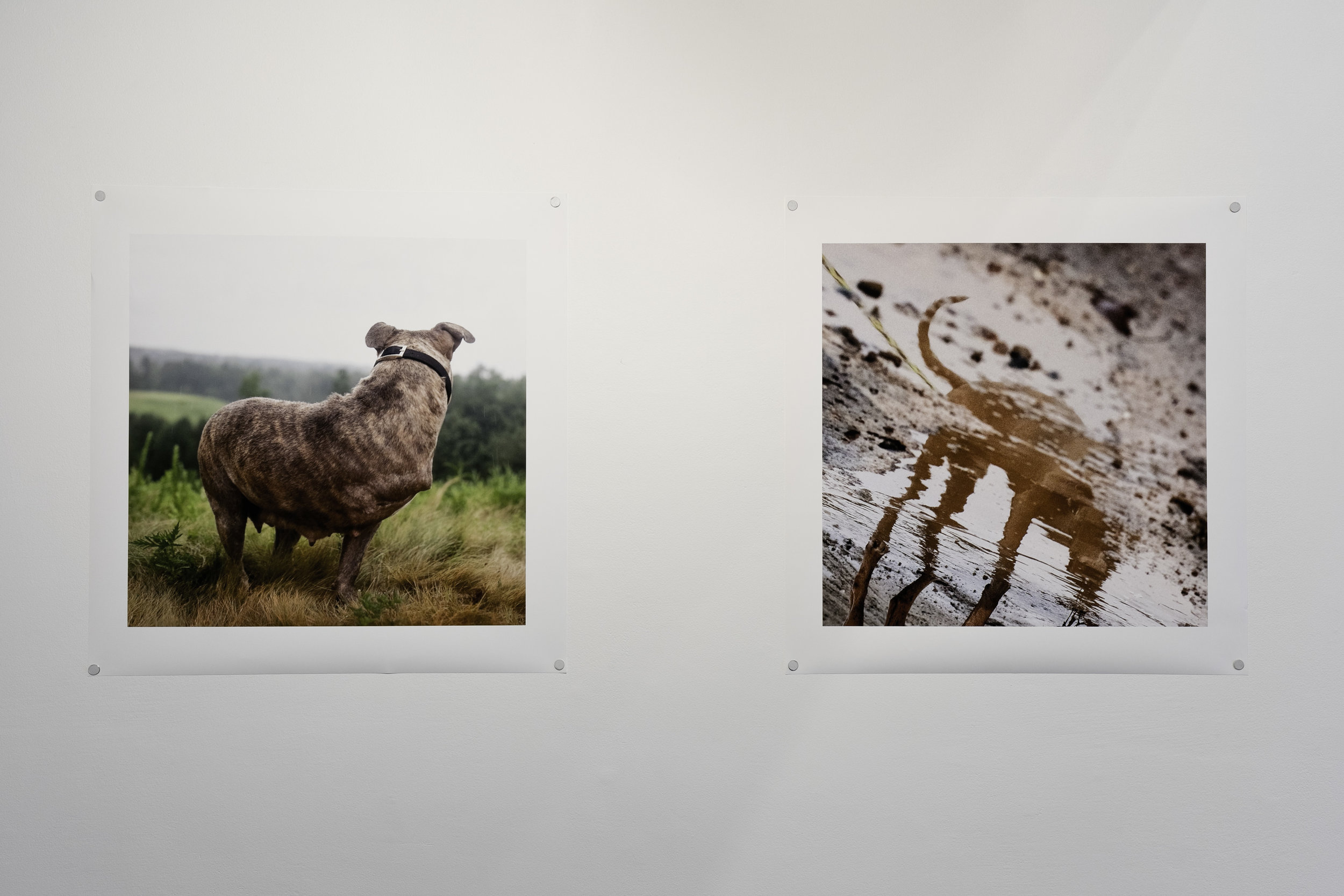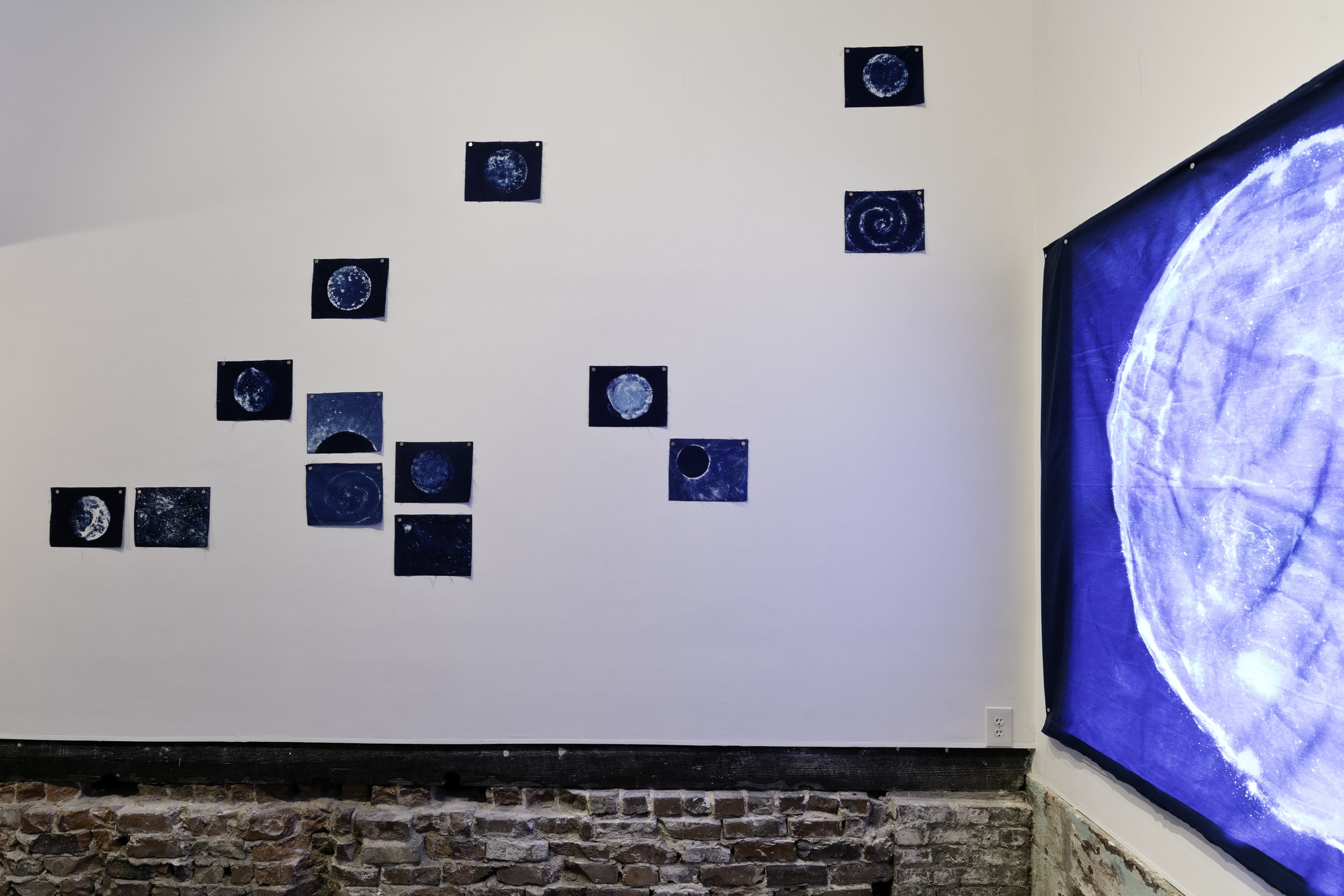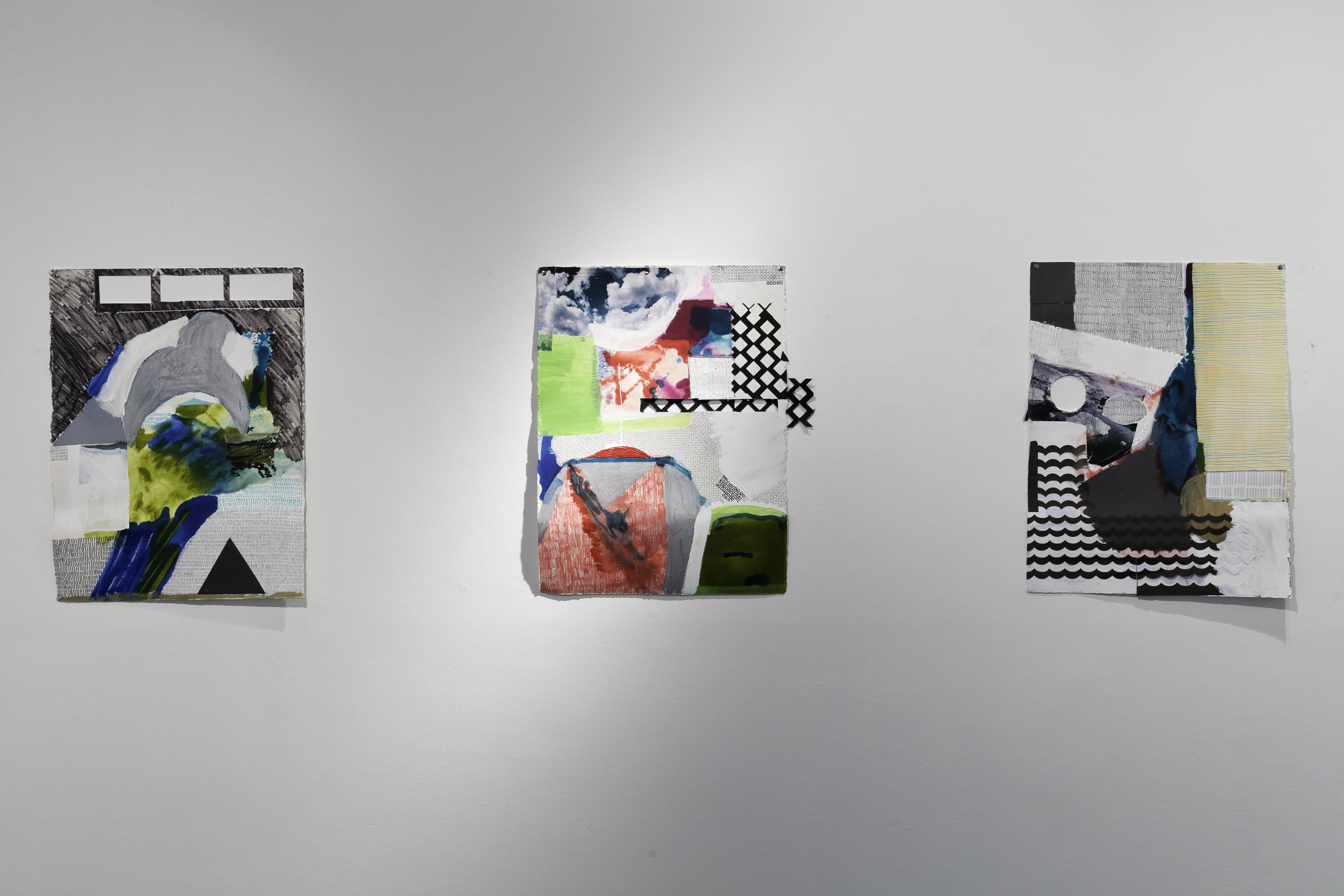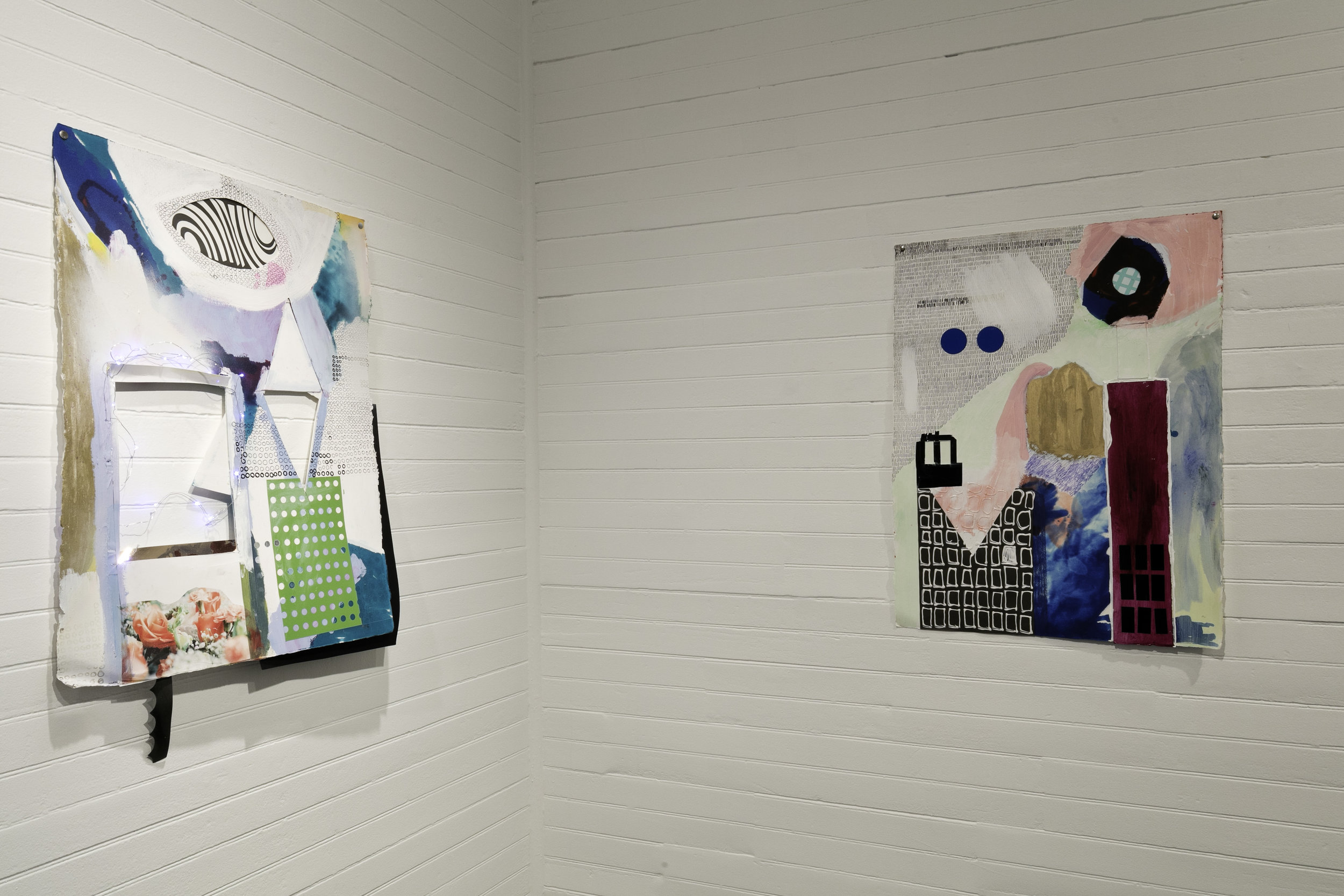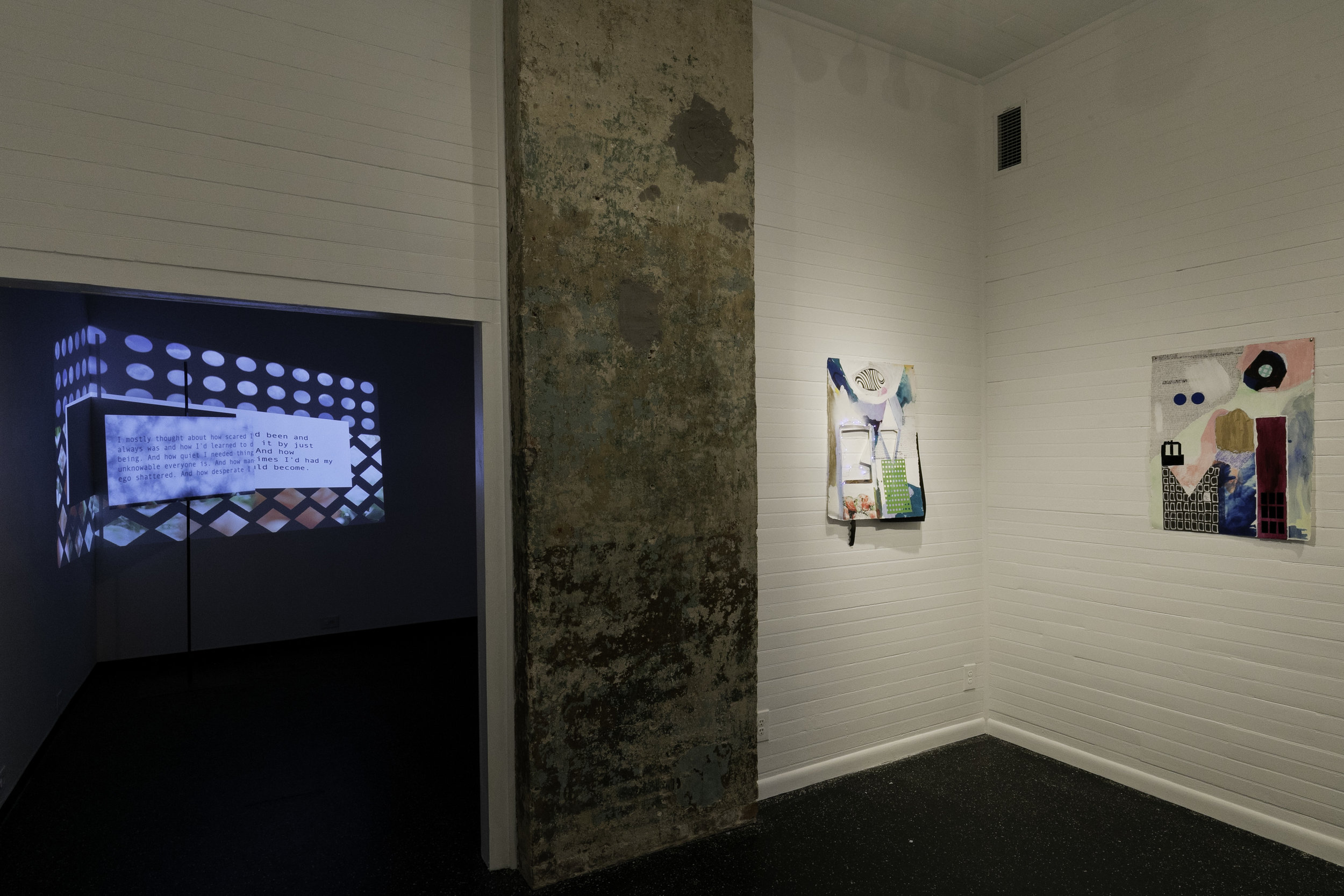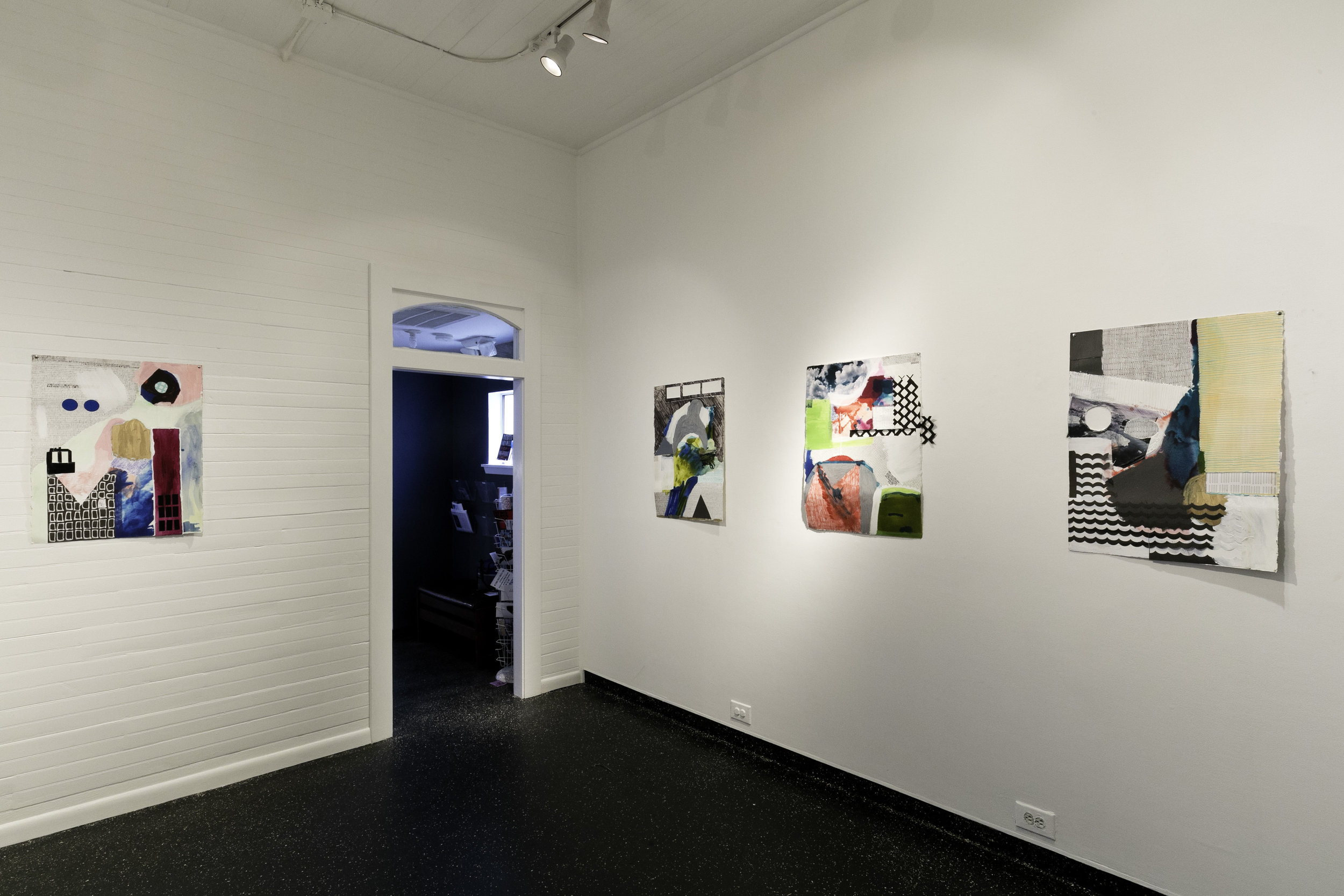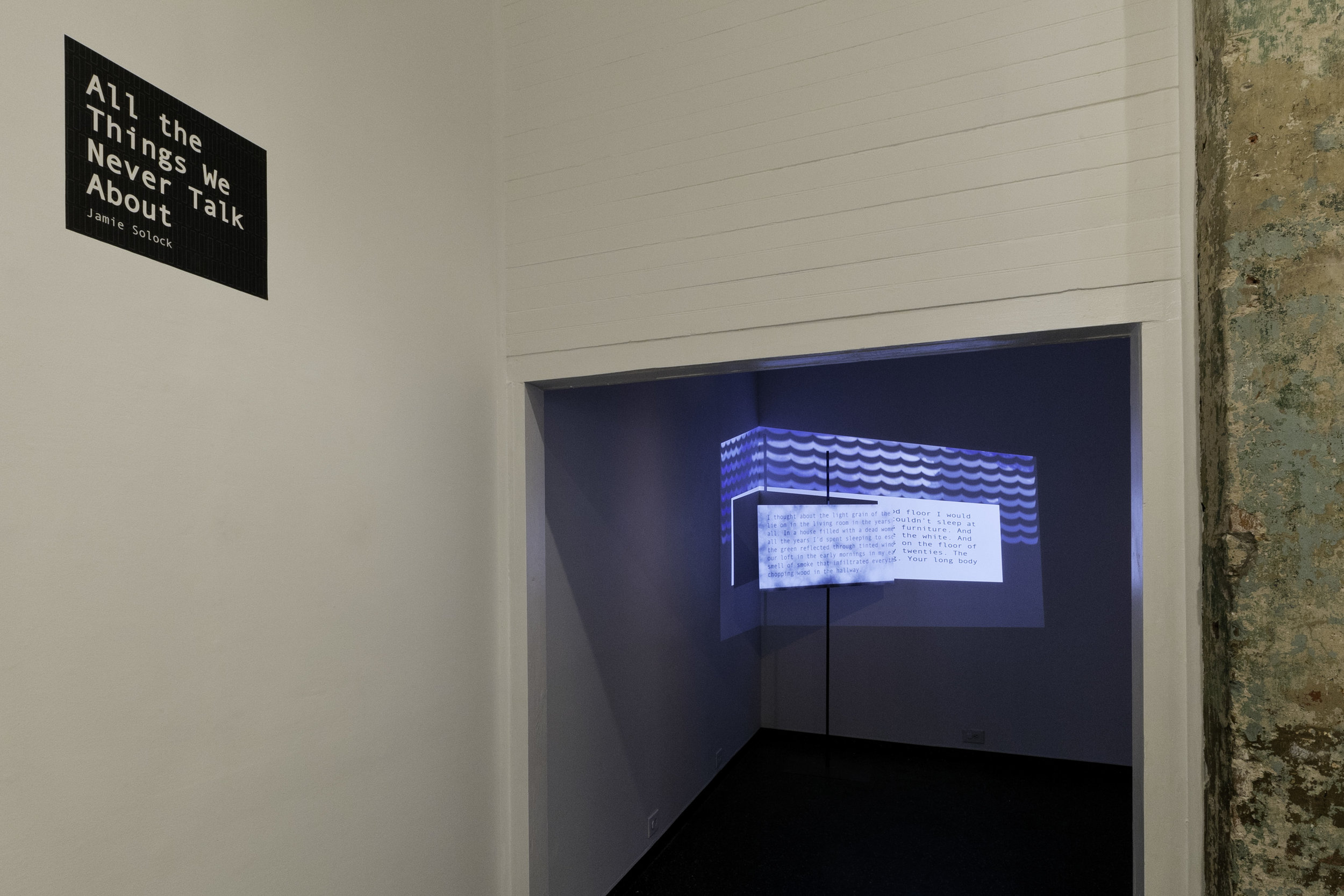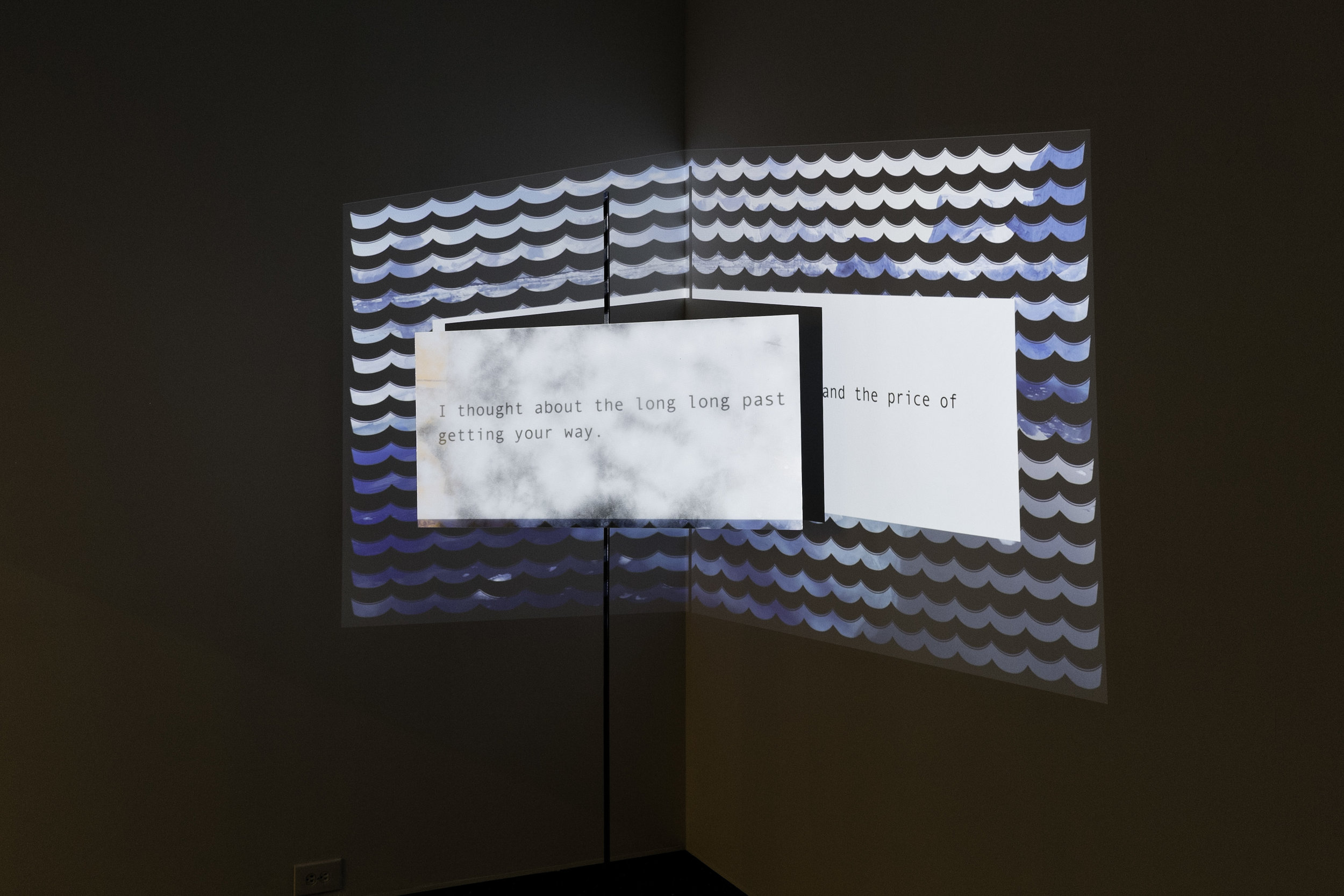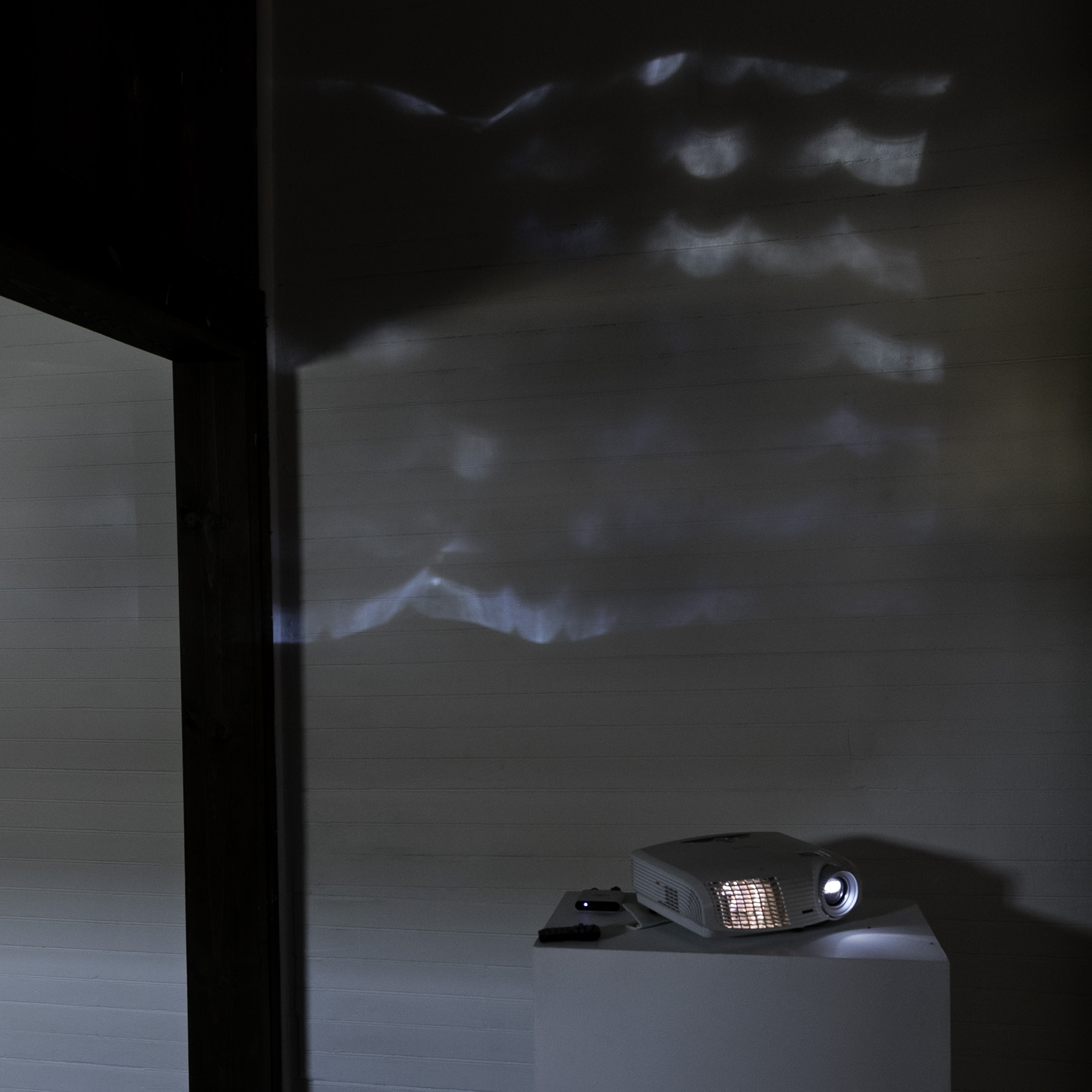September 9- October 8, 2017
Opening reception Saturday September 9, 6-10pm
Gallery Walk-though at 5:30pm opening night, Saturday September 9th.
Room 1:
Lee Deigaard, selection from photographic series Admixture of Will and Seduction, 8"x8", 2013-17.
Lee Deigaard
Vixen. Vector
An arrangement of photographs chronicling sympathetic alignments and other canine geometries.
Former street dog defies Cartesian dualism, illuminates Cartesian geometry on the streets of New Orleans.
In my work, exploring levers of empathy (particularly between species), capturing the incidental signifiers (gesture, transient expression) relies on a convergence of reflex and impulse, situation and timing. On daily walks, tiger dog moves through the big city, carrying nothing, wearing nothing; her body is her vehicle and her expression. Photographs from our outings reveal fleeting and yet deliberate synchronicities and alignments-- of limb and leash, shadow and sidewalk crack-- created by a dog finding her place and translating her role within it. Through companionate mirroring of animate and inanimate forms, she delineates subtle harmonies. Her everyday geometry, its ephemerality and its searching sequences, are both improvisations and statements. To see the city through her is to discover a cursive- of routes and scent trails, of scribbled street runes. It’s an experience of deep reading.
Rescued from the streets, she retains aspects of a wild creature, like a coyote or a vixen, and the decisions she makes about where to go-- the ways she exercises her autonomy, posits her theories of whereabouts and motives, and hunts the evidence-- carry added poignancy.
Lee Deigaard lives and works in New Orleans, Louisiana and in rural Georgia. Her studio practice engages wild animals and collaborates with animals who are friends and family. Her work explores animal protagonists and the emotional spaces and physical landscapes where humans and animals co-habitate. She is a fall 2017 Artist-in-Residence at the Joan Mitchell Center in New Orleans. Her video installation Steady Star was on view this summer at the New Orleans Museum of Art in Pride of Place: The Making of Contemporary Art in New Orleans. As a member of The Front since 2009, she has curated shows about animal companions, Standing Heat: I am I because [my little dog] knows me and You Beautiful Bitch among others. Her series of nocturnal photographs of animals won the Clarence John Laughlin Award and was featured in solo shows at The Ogden Museum of Southern Art in 2014 and at Arthur Roger Gallery in 2016 and in the group show Beauty and the Beast: the Animal in Photography at the Museum of Photographic Arts in San Diego. As a Southern Constellations Fellow and artist-in-residence at Elsewhere in Greensboro, NC, she invited horses to explore a museum housed in a former thrift store.
Room 2:
Shannon Johnstone
Stardust and Ashes
Shannon Johnstone, Stardust and Ashes #40 & #72, Cyanotype on fabric, 10” x 8” each, 2017.
STARDUST and ASHES ARTIST STATEMENT
The nitrogen in our DNA, the calcium in our teeth, the iron in our blood, the carbon in our apple pies were made in the interiors of collapsing stars. We are made of starstuff. —Carl Sagan, Cosmos
I made these cyanotypes with the ashes of euthanized homeless animals from an animal shelter’s crematorium. These animals died with nobody to mourn their passing, except maybe a few overwhelmed shelter workers.
I hope these images serve as a memorial to these animals, who were nobody and nothing. Turned to dust and returned to the cosmos, they become everyone and everything. Just as we all will someday.
For the past decade I have been working with homeless pets and exploring ways to visualize the tragedy of animal overpopulation. Up until now, I have used traditional lens-based photography. For this new work, I was inspired by artists who use simplicity, pulchritude, and heartbreak as their tools. Artists such as Chris Jordan, Michal Rovner, and Felix Gonzalez-Torres, who draw you in with beauty, but then hit you in the gut with sadness.
Using my own breath and fingers to manipulate the ashes, I work the ashes into celestial configurations while the sun exposes the cyanotype turning the negative space Prussian blue. With these images I hope to mourn the passing of thousands of our forgotten companions, and remind us that we are all connected and headed for the same fate: reduced to dust and returned to the stars.
LANDFILL DOGS ARTIST STATEMENT
These are not cute pictures of dogs. These are dogs who have been homeless for at least two weeks, and now face euthanasia if they do not find a home. Each week I bring one dog from the county animal shelter and photograph him/her at Landfill Park, a former landfill converted into a public park.
The backdrop of Landfill Park is used for two reasons. First, the dogs will end up in a landfill if they do not find a home. They will be euthanized and their bodies will be buried deep in the landfill among our trash. Below the surface at Landfill Park there are more than 25,000 dogs buried. I think of this park as a burial ground. These photographs offer the last opportunity for these dogs to find homes. The second reason for the landfill location is because the county animal shelter falls under the same management as the landfill. This government structure reflects a societal value; homeless cats and dogs are just another waste stream. However, this landscape offers a metaphor of hope. It is a place of trash that has been transformed into a place of beauty. I hope the viewer also sees the beauty in these homeless, unloved creatures.
As part of this photographic process, each dog receives a car ride, a walk, treats, and about 2 hours of much-needed individual attention. My goal is to offer an individual face to the souls that are lost because of animal overpopulation, and give these animals one last chance. As the project continues, we see the landscape change with the seasons while the constant stream of dogs remains the same. So far I have photographed 180 dogs. 156 have found homes or been sent to rescue, 4 are still waiting, and 20 have been euthanized for various reasons.
Shannon Johnstone is a tenured associate professor at Meredith College in Raleigh, North Carolina. Her photographic work deals with themes that reclaim what has been discarded and make visible that which is hidden. Landfill Dogs has been featured in national and international exhibitions and magazines, most notably on ABC World News with Diane Sawyer (December 2013) and CNN.com (November 2014). Landfill Dogs book was released in November 2015. Johnstone lives in Cary, NC with her husband, four dogs, and two cats.
Shannon Johnstone, Mistletoe, impoundment #81087, Archival Inkjet Print 20” x 20” 2012.
Rooms 3 & 4:
Jamie Solock
All of the Things We Never Talk About
All of the Things We Never Talk About is a new group of drawings, sculpture and projection by Jamie Solock. It explores the ways in which psychic and physical landscapes can become commingled, joining and breaking apart again in ways that cause memory and familiarity to render truth obsolete. It uses narrative and symbol to take the viewer through the disjointed journey.
Jamie Solock practices art out of her studio in New Orleans, is a member of the Front and has shown nationally and internationally. She’s interested in challenging the ways in which we use image, language and symbol to create meaning.
“Thinking about it, laying it all out, I see the before, the after and the current moment. All in the same breathe. In the same space. With piles of artifacts to the ceiling. Layers of the used, discarded and repurposed all around me, all at the same time. I want to translate these layers into words and images and then filter them back to write the story I am constantly witnessing. My art illuminates those moments and the ways our perceptions of time and truth create new fiction. It rewrites the myth and invites the viewer to do the same. It questions our expectations and frustrates the way we see both through image and language. My work undermines the relationship of those two tools that we most depend upon to understand our experience."
